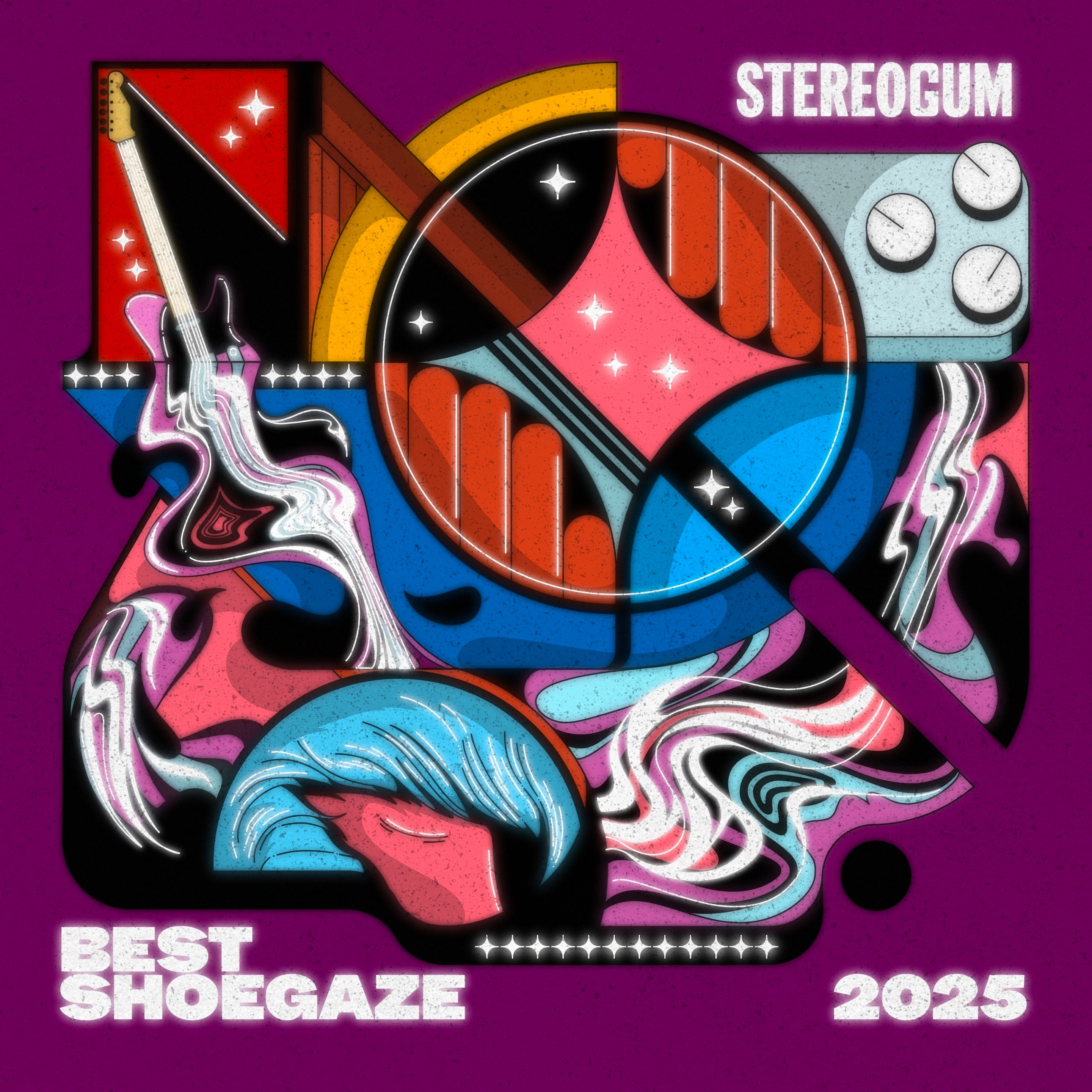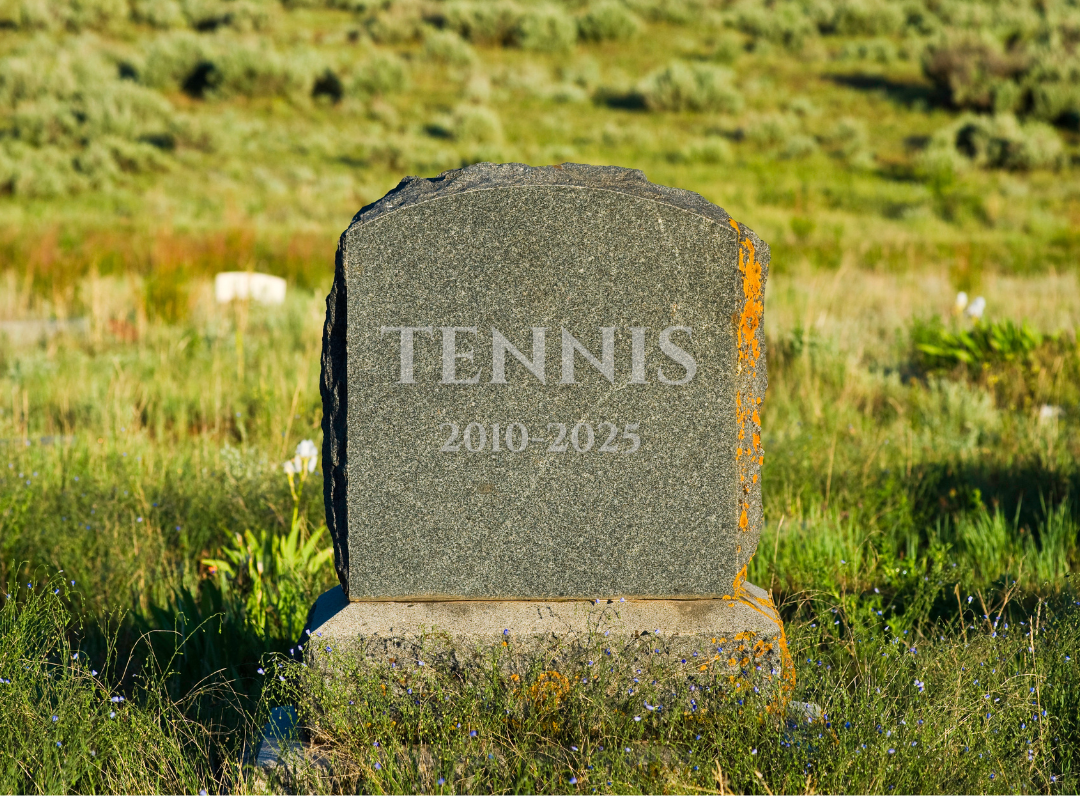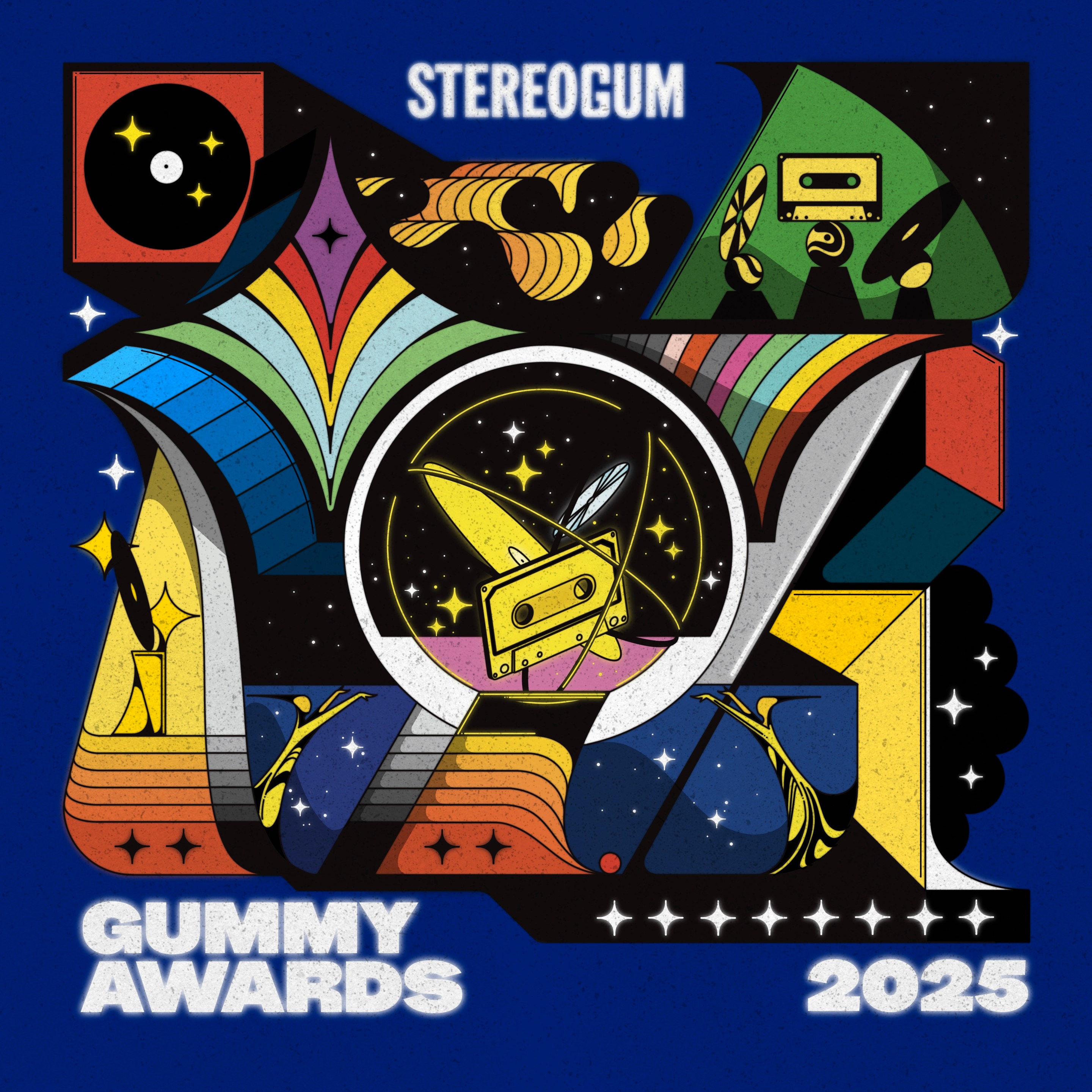It's the songs. People who love music love Tom Petty, and the songs are why. It's not because he was a dominant personality, a stylistic innovator, or a monster performer. He didn't necessarily turn every head when he walked into the room. He didn't remake his genre. He didn't make it OK to be weird. He just wrote a whole lot of really, really great songs -- songs that can turn your day around when they come on the radio, songs that sound as fresh today as they did decades ago, songs that will always evoke memories of long car rides or basketball practices or afternoons spent on a porch with a beer in your hand. Petty's songs are such a part of our collective experience that it's impossible to imagine a world without them. And we won't have to. Petty might not be with us any longer, but his songs always will be.
So, with that in mind, we, your Stereogum staff, have come together to celebrate Petty's songbook. This was a rare all-hands-on-deck affair. We all have Petty songs that we love, and each one of us picked one song to discuss. Any of us could've picked any number of songs, and there would still be plenty more amazing songs left over. So read about ours, and then help us out by telling us about your own favorite Petty songs in the comments section. --Tom Breihan
"American Girl" (from Tom Petty And The Heartbreakers, 1976)
You can't begin to quantify Tom Petty's legacy, but if you want to get a good idea of its near-infinite vastness, try to quantify only the legacy of Petty's "American Girl," released as a single in early 1977. It's one of the man's most beloved songs, but "American Girl" doesn't even sound like consummate Petty. It's not a mellow heartland rocker; it's a coiled and propulsive bit of proto-punk, its central lyric appropriated from a line of dialogue in Francis Ford Coppola's 1963 gothic-horror film Dementia 13 ("Especially an American girl. You can tell she's been raised on promises"). And yet, it's a landmark tower in our cultural skyline: endlessly referenced, instantly recognizable, and multitudinous enough to hold a universe of meanings.
I'd be willing to bet the majority of people living today first encountered "American Girl" in either Fast Times At Ridgemont High (1982) or Silence Of The Lambs (1991). Those are two of the best domestic films of the second half of the 20th century, and "American Girl" serves a crucial function in both. (If you can disassociate it from Buffalo Bill's horrifying abduction of Catherine Martin, consider yourself lucky. I still experience mild nausea and a deep-seated Pavlovian "flight" response every time I hear the thing.) And then, of course, the Strokes basically sampled the song on their own career-defining hit "Last Nite" -- which means, on some level, "American Girl" is the progenitor of rock music in this millennium.
For years, critics and fans pointed out the similarities between "Last Nite" and "American Girl" without knowing the precise relationship between the two songs. Was it an intentional reference or a subconscious coincidence? Eventually, Strokes frontman Julian Casablancas set the record straight: "People would say, 'You know that song "American Girl" by Tom Petty? Don't you think it sounds a little like that?' And I'd be like, 'Yeah, we ripped it off. Where you been?'"
Nobody loved that more than Petty: "That [quote] made me laugh out loud. I was like, 'OK, good for you.' It doesn't bother me."
Of course it didn't bother him. Did anything bother Tom Petty? He was so much bigger than that. He was part of the firmament and he'll remain there. Even if "American Girl" were the only song he'd ever released, he'd be up there with the gods. But 40 years ago, Petty was just getting started. He'd go on from there to build a stack of hits as high as the moon. Tom Petty may be gone, but he's gonna be with us for a long, long time. --Michael Nelson
"Don't Come Around Here No More" (from Southern Accents, 1985)
Through Tom Petty's peak years -- compared to most careers, an atypically long stretch from '70s classics to hit sing-alongs of the late '80s and early '90s to a middle-aged masterpiece in Wildflowers -- he always maintained a reliable consistency. You could always count on the man for punchy, economical rock songs or weathered Americana, for effortless catchiness delivered in that reedy drawl of his. There was growth and slight modulations, but experimental moments -- moments like "Don't Come Around Here No More" -- were rare.
One of the songs Petty co-wrote with the Eurhythmics' Dave Stewart for 1985's Southern Accents, "Don't Come Around Here No More" is some paradoxical mashup of new wave, psychedelia, and Petty's brand of heartland rock, his customarily rootsy vocals backed up by a stuttering '80s drumbeat, airy string synths, and electric sitar. It's a weird song to have been a recognizable Petty single. Delivered from the perspective of a fed-up former lover, the song is driven by a conversational, pissed-off mantra rather than than any big chorus. And yet, like all of Petty's other best songs, it lodges itself in your head, woozily pulling you in where Petty usually favored the direct hit.
Then there's that brief rupture at the end, where Petty and the Heartbreakers kick it up into a rock song -- a section that would be extended and intensified live -- like he's willfully breaking the spell, bringing the whole thing back down to earth. Ever the relatable everyman rockstar, Petty never had much time for dalliances; his style was too focused. That's what makes "Don't Come Around Here No More" so special as a famous Petty song that acts as a twist from his more universal and affirming classics: It was one time where Petty ventured out someplace different, and he still didn't lose himself. That familiar voice was still right there. --Ryan Leas
https://youtube.com/watch?v=h0JvF9vpqx8
"Rebels" (from Southern Accents, 1985)
Tom Petty songs take you back. When I hear "Rebels," I’m a kid again hanging out in my aunt's living room while my big cousin blasts Southern Accents from the stereo. It has an intro like a car's revving engine -- a low rumble that steadily builds up to that elated feeling you get when a busted clunker's ignition finally catches. Together, my cousin and I holler that goofy, walloping opening line: "HONEY DON’T WALK OUT, I’M TOO DRUNK TO FOLLOW!"
Petty wrote and embodied characters and archetypes; he told distinctly American stories. The "Rebels" protagonist -- a no good, Dixie-born biker, a proud son of the Confederacy -- is one that I’ve always been drawn to. He's "a little rough around the edges" and "inside a little hollow," a man who blames the past for his present, who somehow can’t catch a break even though he’s got a woman by his side to pay all of his speeding tickets. Certain people will scoff at this so-called rebel while others will identify with him, and that’s the beauty of Petty's lyrics: He wrote about how different people choose to move through the world and he rarely put anyone down in the process.
Petty wrote this biker as a caricature, and his relationship to the song proved complicated on the Southern Accents tour when he saw audience members waving that Confederate flag stage prop back at him, proudly wearing the rebel's spirit as their own.It's an anthem some people will claim, sure, but these stories Petty told were bigger than any one type of person; "Rebels" is a song about being haunted by your familial history and at the mercy of a past you can't, or won't, escape. And while I’d never want to be caught in a bar with this particular character, I can't shake his brash, indignant spirit, and maybe more so, his sadness. "I get faced with some things, sometimes," he confesses, "that are so hard to swallow."
After that quiet, vulnerable moment, the "Hey HEY HEYYYYYYYYY" chorus kicks in, and it sounds enormous; inside of it is a home for anyone born raging against something they can't control. It's a rallying cry as much as it is a eulogy for a time, a place, a person so full of fight they won't make it. --Gabriela Tully Claymore
"Free Fallin'" (from Full Moon Fever, 1989)
It's the obvious pick, the basic pick, the one Petty song that practically everyone on the planet knows. And there's also a very good chance that it's the best one. Petty and Jeff Lynne's lament about Californian ennui and good girls home with broken hearts is a perfect campfire singalong, a perfect first song to learn on guitar. It sounds eternal the first time you hear it. But it's also a stunning example of craft, a pop recording with precious few equals. That moment on the song where Petty wants to black out over Mulholland, when the snares rush underneath his voice and the choir of multi-tracked Jeff Lynnes comes swooping in from the sky -- it just doesn't get better than that.
Just when that moment hits in the gorgeously sunbaked MTV-staple video, Petty pulls up inside of a convertible while kids turn skateboard tricks on an enormous half-pipe while an enormous skywritten heart hangs in the impossibly blue sky. Petty, in floral shirt and big sunglasses and stupid black hat, mutters into the world that he's going to leave this world for a while, and then he glances over to those kids on that half-pipe, thinking about who knows what, in no hurry to go anywhere. Decades later, with the song baked into absolute familiarity, that moment still raises goosebumps. Sometimes the basic pick is the right one. --Tom Breihan
"Learning To Fly" (from Into The Great Wide Open, 1991)
When news of Tom Petty's heart attack broke yesterday, I, like many of you, turned to his music. If you had asked me before then if I was a Tom Petty fan, I probably would've said yes, with some qualification: "I like him, but I never got that deep," or something like that. I knew the hits, of course -- who doesn't? -- but as I worked my way through his discography, I discovered I knew songs that I didn't even realize I knew, and the ones I didn't know, I felt like I did. That's the power of Tom Petty's songwriting. It wasn't about him, it was about the songs, and for decades, those songs hung in the air, seeping into the very fiber of America and all the boys and girls in it. They're still there, and they probably always will be.
So I knew Tom Petty, and I knew "Learning To Fly." I've listened to it at least 10 times since yesterday. I haven't gotten tired of it yet, and I suspect I never will. Like many of Petty's songs, it's deceptively simple -- just four chords, searchingly jangly guitar, and that distinctly nasal voice, both timeless and intensely nostalgic. The lyrics are just straightforward enough to make sense and just vague enough to suggest a deeper meaning, to allow the listener to impose their own interpretation onto the heartland America conjured up by Petty and co-songwriter Jeff Lynne. That simplicity is the whole beauty of it.
There's video of Petty playing "Learning To Fly" at what is now his last performance ever. Towards the end of the song, he raises his hands like a conductor, and while the crowd takes over the chorus, he sings an aching countermelody on top of it. It's a great little moment, and it's the kind of moment that can only happen when absolutely everyone in the audience knows your song. The thing is, with Tom Petty, it could've been any song. --Peter Helman
"Christmas All Over Again" (from A Very Special Christmas 2, 1992)
It's damn hard to write a good original Christmas song. There's a reason that only a handful of contemporary holiday songs have stood the test of time, and Tom Petty is among the rarified few that managed to pull it off. To make a really successful Christmas song, you need to strike the exact right tone: It can't be too wistful or too happy; it needs to be both a little schmaltzy and a little sad. "Christmas All Over Again" ticks off all of those boxes and then some.
It was written for Jimmy Iovine's massively popular A Very Special Christmas 2 compilation -- or, as it was known colloquially in my house, "the green one, not the red one" -- and it takes its cues from the father of all Christmas albums, A Christmas Gift For You From Phil Spector. Petty aimed to recreate Spector's renowned "wall of sound" approach, and he recorded the song live with a crew of almost 20 musicians, including his longtime collaborator Michael Campbell and fellow Traveling Wilbury Jeff Lynne. (George Harrison actually lent Petty the ukulele that he used to write the song.)
From its opening chimes, "Christmas All Over Again" sounds like an instant classic in the way it reverentially mimics a past sound to make it feel like it's already been around forever, sort of like it's eternal. A lot of Petty songs are like that; they've always been on the periphery of life, as ubiquitous as the sky or oxygen. It makes total sense that Petty would end up creating a Christmas staple. The best Petty songs have a universality to them that's unimpeachable. Who doesn't like this song?
Petty's always written from an everyman's perspective, and what's more American (and human) than simultaneously dreading and anticipating the holidays? "Christmas All Over Again" has everything a classic should have. It's innocently dirty ("Christmas is a rockin' time/ Put your body next to mine/ Underneath the mistletoe we go"), it's wryly funny ("Long distance relatives/ Haven't seen 'em in a long, long time/ Yeah, I kinda missed 'em, I just don't wanna kiss 'em"). It's frosty memories around a warm fire. "Christmas All Over Again" recognizes and revels in the artifice of the season. It's a snow globe. And every time it comes around, it feels like the first time. --James Rettig
"Mary Jane's Last Dance" (from Greatest Hits, 1993)
The Tom Petty I will always remember first and foremost is not the rough-and-tumble pop-rocker of his youth nor the wizened blues-rock sage of his later years but the resurgent mid-career Petty who was splattered all over VH1 and MTV in my earliest days as a pop fan. I remember Petty embodying the Mad Hatter in "Don't Come Around Here No More," overlooking highways and parking lots in "Free Fallin'," and his head-bobbing, room-spinning closeup in "You Don't Know How It Feels." I especially remember him creeping around the mortuary and stealing a lady's dead(?) body in "Mary Jane's Last Dance," a video that mesmerized and scandalized me long before I was old enough to comprehend its many layers. It speaks to the breadth of Petty's creative output that those videos, not his remarkable songbook, were what first seized my attention. His career began half a decade before MTV, but he adapted to that era effortlessly and became one of the fledgling network's early icons.
Years later, I'd filed all those clips away as part of a nostalgic memory patchwork but had never truly fallen in love with the man's catalog. I don't think I could have named a favorite Petty song until I had the privilege of watching the Heartbreakers knock out a festival crowd in 2014. On that night it became abundantly clear which Petty classic had left the deepest imprint on my heart when, after just one other song, the band launched into "Mary Jane's Last Dance" and initiated a state of physical and spiritual release.
Hearing those harmonica blasts slicing across those swampy guitar chords just swept me away. It's like Bob Dylan playing grunge, merging Petty's roots with the zeitgeist like it's so easy anyone could do it. The groove is elemental, beautiful in its proud ugliness -- an ideal backdrop for a story about a woman from Indiana whose very presence is as tantalizing and dangerous as a drug. And then the chorus comes along and lifts the song heavenward in a burst of fleeting beauty, delicate harmonies rising like a spirit ascending from a body ever so briefly before returning to Earth to jam a little longer. If only Petty were afforded a similar opportunity. --Chris DeVille






